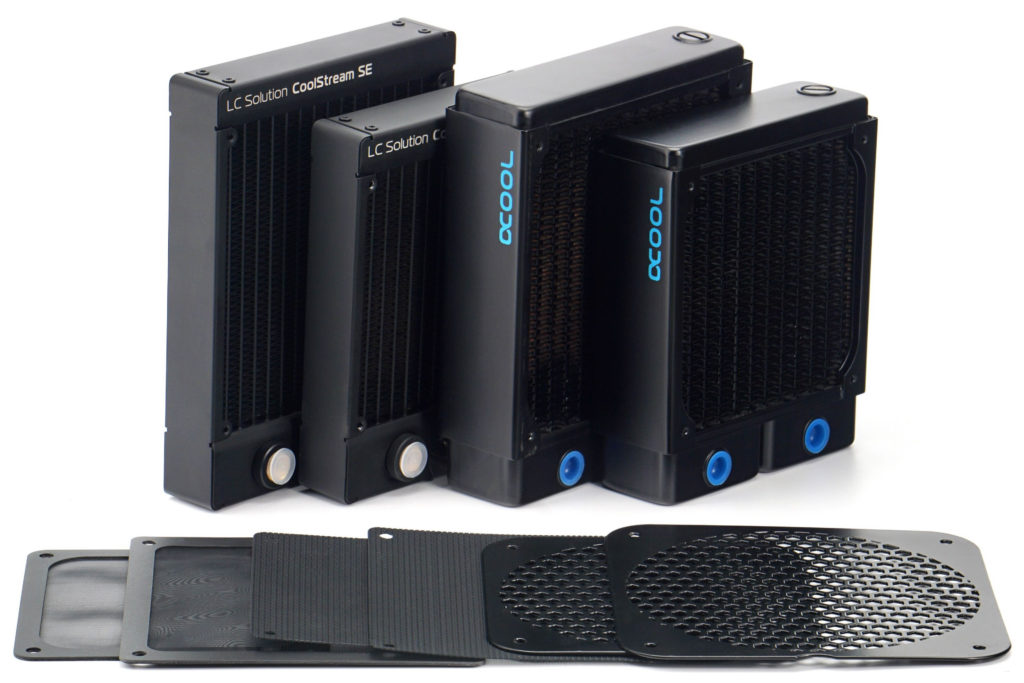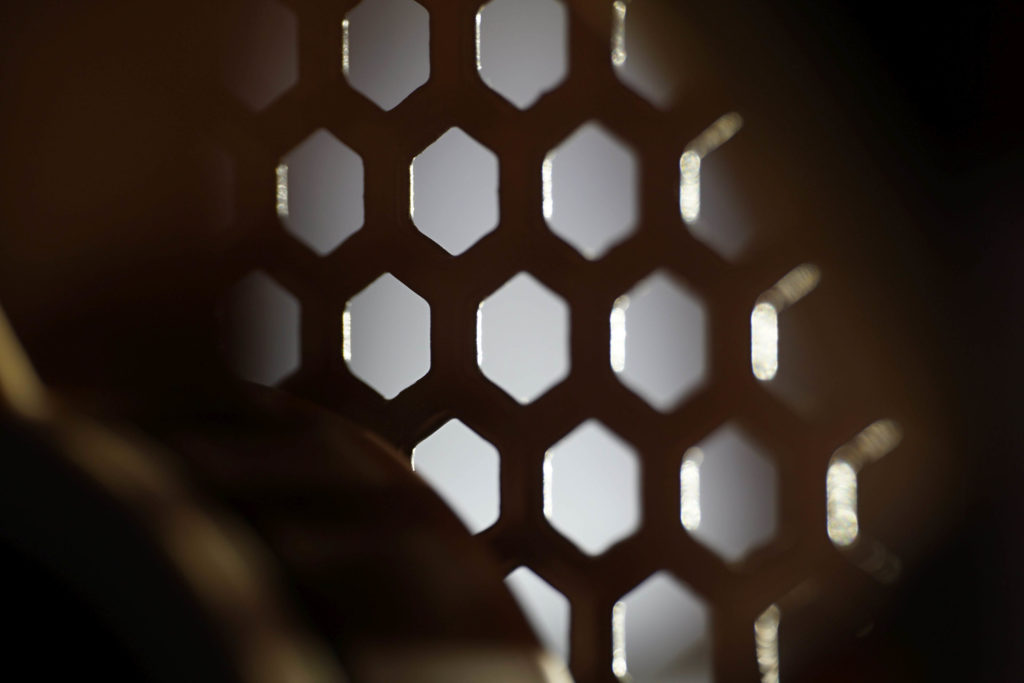Everything changes with obstacles
The range of 140mm fans is now expanded by the Noctua NF-A14x25 G2 PWM. The wait for this model was very long, but finally, after various hardships, everything was brought to a successful end. This, by the way, is also indicated by our in-depth tests, from which the NF-A14x25 G2 fan takes away the “best” results across many usage scenarios. This is also due to the significant innovations in the aerodynamic design.
Everything changes with obstacles
So far, we have described how static pressure and airflow measurements are made under conditions where the fan has no obstacles in its path. In practice, however, fans do not usually blow into an empty space, but have a filter, grille or radiator in front of or behind them, the fins of which need to be pushed through as efficiently as possible.

We will also measure both airflow and pressure through practical obstacles for the reasons stated above. These include two types of filters that are usually used in PC cases. One fine – nylon and the other plastic with a thinner mesh. One other obstacle is the hexagonal grille perforated at 50%, on which the vast majority of fans – intake and exhaust – are installed. In some cases, we measure the effect of the obstacles on the results at positions (behind or in front of the impeller) that are used in practice. All obstacles are both pushed through to detect pressure drops, but also pulled through, which in turn speaks to the impact on airflow.
We use two radiators that differ in thickness and fin density. The EK CoolStream SE120/140 is 28 mm thick and the FPI is 22, the Alphacool NexXxoS XT45 v2 is thicker (45 mm) but with less FPI. CoolStream’s fin disposition is also similar in parameters to AIOs. The results on the NexXxoS will again be attractive for those who build their own water cooling loops, where the fans should work well even at low speeds – hence the lower fin density.
These obstacles and especially the radiators, but also the grilles, increase the mechanical resistance in front of the fan, resulting in higher noise levels. However, we will still tune the fan speeds to the specified noise levels of 31 to 45 dBA. Naturally, the speeds will always be lower than when testing without obstructions, but we will maintain the noise levels for clarity. The different noise levels with and without obstacles will only be at maximum power. In this mode it will also be nice to see how the fan design works with the obstacle and in which case the noise level increases more and in which less.
- Contents
- Noctua NF-A14x25 G2 PWM in detail
- Overview of manufacturer specifications
- Basis of the methodology, the wind tunnel
- Mounting and vibration measurement
- Initial warm-up and speed recording
- Base 6 equal noise levels…
- ... and sound color (frequency characteristic)
- Measurement of static pressure…
- … and of airflow
- Everything changes with obstacles
- How we measure power draw and motor power
- Measuring the intensity (and power draw) of lighting
- Results: Speed
- Results: Airlow w/o obstacles
- Results: Airflow through a nylon filter
- Results: Airflow through a plastic filter
- Results: Airflow through a hexagonal grille
- Results: Airflow through a thinner radiator
- Results: Airflow through a thicker radiator
- Results: Static pressure w/o obstacles
- Results: Static pressure through a nylon filter
- Results: Static pressure through a plastic filter
- Results: Static pressure through a hexagonal grille
- Results: Static pressure through a thinner radiator
- Results: Static pressure through a thicker radiator
- Results: Static pressure, efficiency depending on orientation
- Reality vs. specifications
- Results: Frequency response of sound w/o obstacles
- Results: Frequency response of sound with a dust filter
- Results: Frequency response of sound with a hexagonal grille
- Results: Frequency response of sound with a radiator
- Results: Vibration, in total (3D vector length)
- Results: Vibration, X-axis
- Results: Vibration, Y-axis
- Results: Vibration, Z-axis
- Results: Power draw (and motor power)
- Results: Cooling performance per watt, airflow
- Results: Cooling performance per watt, static pressure
- Airflow per euro
- Static pressure per euro
- Results: Lighting – LED luminance and power draw
- Results: LED to motor power draw ratio
- Evaluation













Wow really a launch day review, is this a first for Noctua? 🙂
It will be the first time, yes. 🙂
Minor errors:
LS-PWM version is up to 800 RPM, not 1200.
Value’s missing in “Noise level – No obstacle – max speed” chart.
Question:
I remember Noctua saying that the protrusions on the gasket can compress enough to form a tight seal (based on my question)… guess not? Or is there not enough mounting pressure?
Thanks for the heads up, it’s corrected! 🙂
Yes, definitely, at different mounting pressures these protrusions in the anti-vibration gasket will compress differently, and in some cases they are compressed completely. As is the case in our situation on the thicker radiator. But there is still a gap on it. Caused by the way the walls of the radiator are rounded and the gasket is not perfectly straight and in places it twists a bit (you can see it well in this photo). It’s still just a soft liner, so it’s a natural thing. Don’t expect dramatic differences at this level though – the airflow through the radiator would be comparable even with an older system without the gasket material around the fan walls. Hmm… it’s maybe a good idea for a specific test looking at the dependence of the airflow on the presence of the gasket. Well, we’ll see…
I’ll test and see how well the gasket compresses once mine arrives. I’m guessing it might need pretty high mounting force to compress completely.
While the imperfect seal might only change the airflow by a few m3h, it seems enough to knock the fan from #1 to #2 at least in some cases. Case in point: no obstacle @ 36 dBA, Round = 810 RPM, 73.9 m3h; Square = 825 RPM, 72.1 m3h. The very slight difference in RPM should be due to the more substantial frame attenuating noise slightly more; meanwhile, the deterioration in airflow despite having higher RPM could only be attributed to increased leakage from the sides.
We will be glad if you share the results after your own tests. 🙂
I don’t have the proper equipment to test the exact force needed, but it seems to require pretty high mounting force indeed. I couldn’t compress it at all with my bare fingers, and in order to compress it on an acrylic panel, I needed unconformably high force (and still couldn’t get the sides to fully seal). For my application, foregoing antivirbation pads and gaskets altogether resulted in a much better seal. Fortunately, I have the intake side against the panel, and according to the manual that side does not need load relief.
Thanks for the info. The degree of deformation of these pads (and the size of the gap between the fan and the radiator) will be strongly dependent on the mounting pressure of the screws, which can vary even when fully tightened.
Such an achievement! Don’t forget, fellows.
Here is a selected comparison to the P14, dust filter and hexa grille.
Nice comparison with the fact that with your frame even better results are achieved. The offset from the obstacle is obviously useful. Microturbulence is suppressed, which reduces noise at the same time as the pressure/airflow is increased. Great, good work. 🙂
In a corsair 5000D where a 7800x3d is cooled by a noctua dh-15, which set of fans or fan configuration do you recommend me for optimal slightly positive pressure? Should i go for 2 front 1400mm, 1 rear 120mm and rear top 120mm? Thanks
One of the good options are Noctua NF-A14x25 G2 PWM fans. Then there are several alternatives that have a suitable aerodynamic design, but you need to know about the things that could possibly bother you. With the BeQuiet Silent Wings Pro 4 (BL099) it could be a whiny coil in PWM control, with the Arctic P14 Max it could be the minimum speed that’s too high, and with the Thermaltake Toughfan 14 Pro it could be the lower build quality (if you come across a clicking piece or multiple such pieces). Of the cheaper fans, the BeQuiet Pure Wings 3 (BL108) is still attractive, but it also has some weak points – check them out in our analysis and consider what is (in)essential for you.
Why did it fail so bad against a plastic filter compared to the previous gen? Are they not good for case intakes?
It is hard to say why there has been such a deterioration. The aerodynamic design of the two fans is significantly different. Some improvement could be achieved with a spacer, as indicated by the results of the NF-A14x25r G2 fan with the DIY frame, but in that case below average results are achieved. In cases with fans more significantly offset from the filters or with a thicker front panel structure, the Noctua NF-A14x25 G2 might already be suitable/top-notch, as can be seen in the results with the hexagonal grille. These are already significantly better than with the first generation fans (NF-A14 PWM).
Thanks for the test ! Time to try those on the North XL. <3
Planning to put 3 on the front and limit them at 1.000 rpm, hopefully they won't resonate with the front wood 😀
The vibration of the NF-A14x25 G2 PWM that reaches the frame is negligible at 1000 rpm. They will almost certainly not cause secondary noise on the front panel of the FD North XL. How the fans will interact with the structure of the brackets or the wood panel is, of course, another matter. Due to these elements, the acoustic profile can change even at lower speeds. Be sure to let us know how this combination of the case (FD North XL) and the fans (NF-A14x25 G2 PWM) behaves. 🙂
I was hoping to replace my 140mm radiator fans with these but, having seen your results, I don’t know that I would benefit from doing so. I have been using the Toughfan ex14 Pro and it seems to beat the NF-A14x25 G2 pretty handily in most of the radiator airflow tests. Am I missing something?
As far as cooling efficiency on radiators is concerned, it will be very similar for both fans. Nevertheless, it must be stated that the Toughfan Pro EX14 should not be lagging behind in this regard and rather will be the one that is more efficient (i.e. achieving a hair higher cooling performance at comparable noise levels). However, the premise that you don’t get to clicky pieces with the Toughfan Pro EX14 has to be met. This is something you probably won’t have to deal with with Noctua NF-A14x25 G2 fans, as the manufacturing quality requirements are higher.
I’m confused about those static pressure and airflow measurements. In your charts, the Arctic P14 (which is much cheaper) seems to beat the NF-A14x25 G2 at matched sound level. It produces higher static pressure against resistance, and more or comparable airflow.
So it seems that this premium fan isn’t that great in terms of static pressure, airflow or noise. Am I missing something?
Thank you for your question, I will be happy to explain.
It is not true that higher measured values of static pressure at the same airflow automatically mean a smaller loss of airflow through an obstacle. This may or may not be the case. One reason for this is that static pressure is measured at zero airflow, which represents significantly more resistance (and back pressure) than any obstacle in practice. The resistance of a radiator is also significantly smaller than the situation at which static pressure is measured. At zero airflow, the fan behaves differently than on an obstacle at non-zero airflow. At zero airflow, a different, practically unrealistic motor output is achieved, and so in the real world it is not possible to work responsibly with this value. In other words, a fan that has a lower static pressure at the same airflow (these values are in turn usually based on a zero static pressure environment, which is also out of common practice…) may not have a greater loss of airflow through an obstacle. Again: It can, it doesn’t have to. Meanwhile, how a particular fan interacts with a chosen obstacle also plays a role in tests normalized by noise level. Specifically, to what extent does a given obstacle increase the noise level of a particular fan. This can also vary from case to case. It depends on the combination of the particular aerodynamic design of the fan with the particular structure of the obstacle. While in some combinations there are no significant tonal peaks (compared to a situation without an obstacle), these are dramatic in some/other cases. It is individual. Anyway, to evaluate responsibly the aerodynamic performance of a fan for practical use based on traditional measurements of static pressure and airflow, and hence actually P/Q curves, is impossible. This is because practical measurements on obstacles, which are important, are lacking. For what reasons you already know. Does that answer your questions? If anything is unclear, feel free to bring it up, we can discuss the specifics again. 🙂